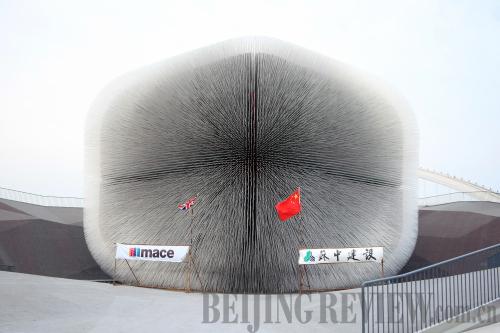| 
World Expo 2010 Shanghai China raised its curtain on May 1 to the anxious expectations of the world.
Under the banner of "better city, better life," more than 200 countries and international organizations have assembled, bringing with them choice achievements and attainments in different fields. Meanwhile, about 70 million visitors are expected from across the world, keen to see the visions of future lifestyles.
So what, some people may contend, isn't it just a repetition of a traditional event with some performing and displaying while others watch and wonder?
Yes, is the answer if looked at with a casual eye; but no, if seen with some penetrating insight.
When Joseph Parkston of Britain designed the Crystal Palace, Gustave Eiffel of France created the Eiffel Tower, Thomas Edison of the United States unveiled his incandescent lamp, and Xu Rongcun of China showcased silk, they did not do so for pride, fame or fortune. And when one group of Japanese followed another to visit the world event, especially in the late 19th century, they certainly did not go for sightseeing or fun.
They went to learn what others were sharing. It is this willingness to share that has led to the creation of one milestone after another in human civilization. The latest building materials of metal and glass proposed by Parkston and the metallography masterminded by Eiffel have done away with bungalows of brick and stone and given rise to shining skyscrapers, the electric lamps invented by Edison have progressed to illuminate streets and homes everywhere in the world, and the silk introduced by Xu Rongcun has been adding charm and comfort to people's lives across the globe to this very day.
The Japanese, meanwhile, benefited most as a nation from their willingness to learn and then share. Getting inspiration from the World Expo 1900 in Paris, for instance, Japan decided on a development strategy of integrating their national spirit with Western science and technology. This blazed the trail for its industrialization and rapid rise to a world economic power. Many have since benefited from Japan's technological expertise.
Times have changed, for sure. But the changes have not affected our need to share. On the contrary, such a need has grown stronger in an era when countries and regions constantly lose independence and become growingly dependent on each other for resources, talent, technology and markets in their course of development. Today no country or region or human group is able to totally go it alone, as was the case before.
More importantly, mankind as a whole has now run into major challenges such as food security, energy shortage, climate change, poverty and sustainable development. As they are universal, these challenges can be met only through a global sharing of experiences, resources, know-how, and most importantly, perceptions and insights.
It is with this understanding that the Shanghai World Expo organizers have planned the "best urban practice area," the first of its kind in a World Expo. Bringing together internationally acknowledged best practices in urban development, this area provides a platform for people to experience the most ideal urban lifestyle, and ponder over the work and responsibility they should share and fulfill in the march toward this lifestyle.
The future has been mapped out, and the road has been marked. So long as we set out without hesitation and share what we have without reservation, "better city, better life" will be both within our grasp and that of the next generation.
The Editor |